Today, two reviews in one. The Samsung Galaxy Book Go laptop is one of the more unremarkable laptops I’ve ever held, but what interested me in the device was what runs under the hood. This laptop has given me my first opportunity to play with Windows on ARM and see how well Microsoft’s efforts to make Windows run on the ARM architecture commonly seen on phones, tablets, and other devices. The results are…. Interesting. Let’s dive in.
Galaxy Book Go – Hardware
First let’s talk about the actual laptop itself. The Galaxy Book Go is a low cost 14” laptop. It retails normally for $470, can often be found on sale for $300, and my specific unit is a refurbished model I found for well under $200. That refurbished unit is the only reason I have one, as I absolutely do not think this laptop is worth $300, never mind almost $500. The aggressive sales seen now are likely due to the fact that the Galaxy Book Go was released in 2021, and is now a year-old product.
Spec wise, the Galaxy Book Go runs a Qualcomm Snapdragon 7c Gen 2 processor, has 4GB of ram, and has 128GB of eUFS storage. That 7c Gen 2 processor is similar to midrange phone processors released in 2021. It has two USB-C ports, one standard USB-a port, and a headphone jack. Included in the box is a 25W charger that is the exact same 25W charger Samsung sells for phones, which is a good reminder that this is a midrange phone stuck into a laptop chassis. The display is a truly terrible 14” 1080p screen. Even for the price this is a bad display, with the colors shifting significantly if you are not looking directly at it.
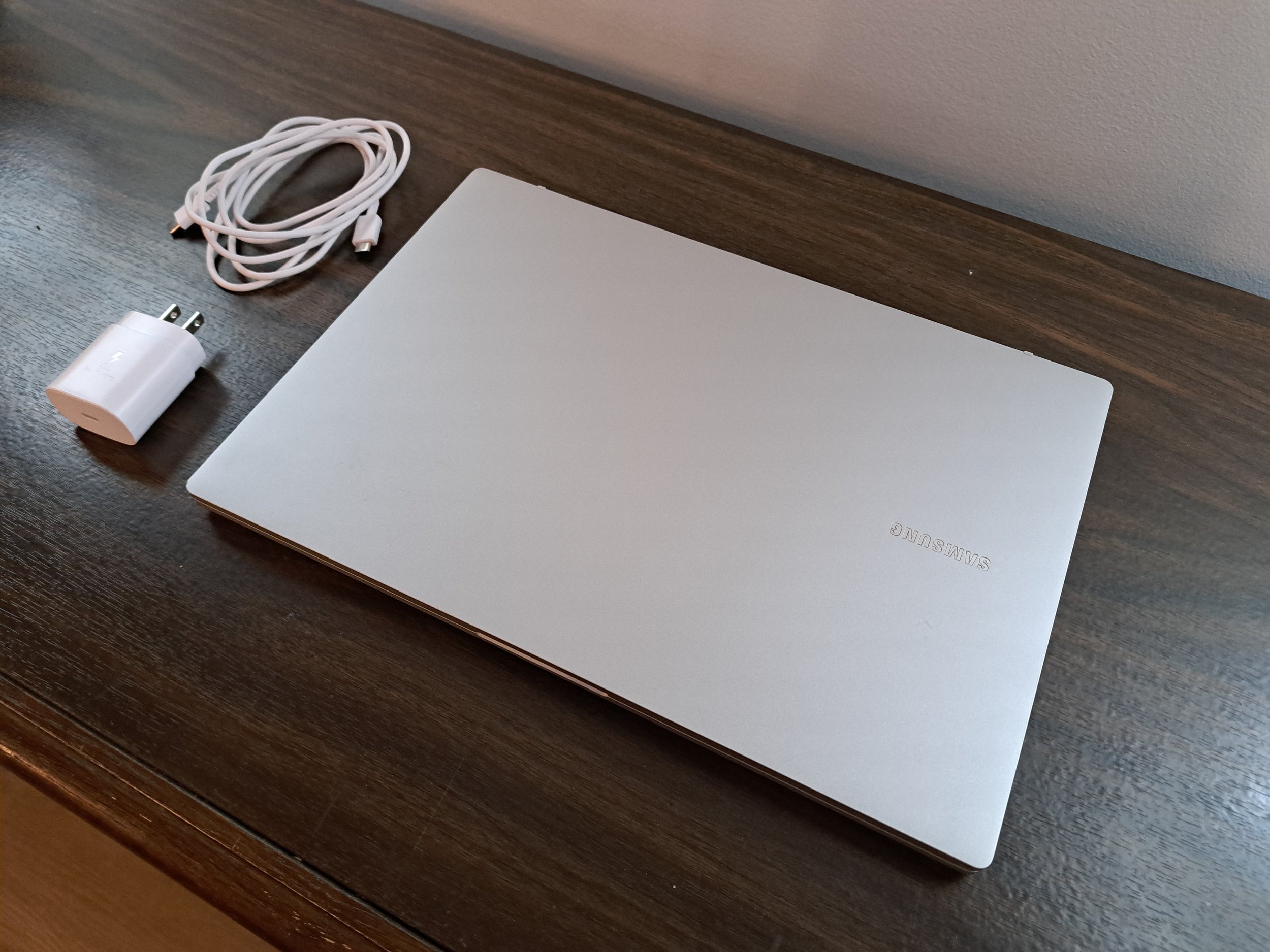

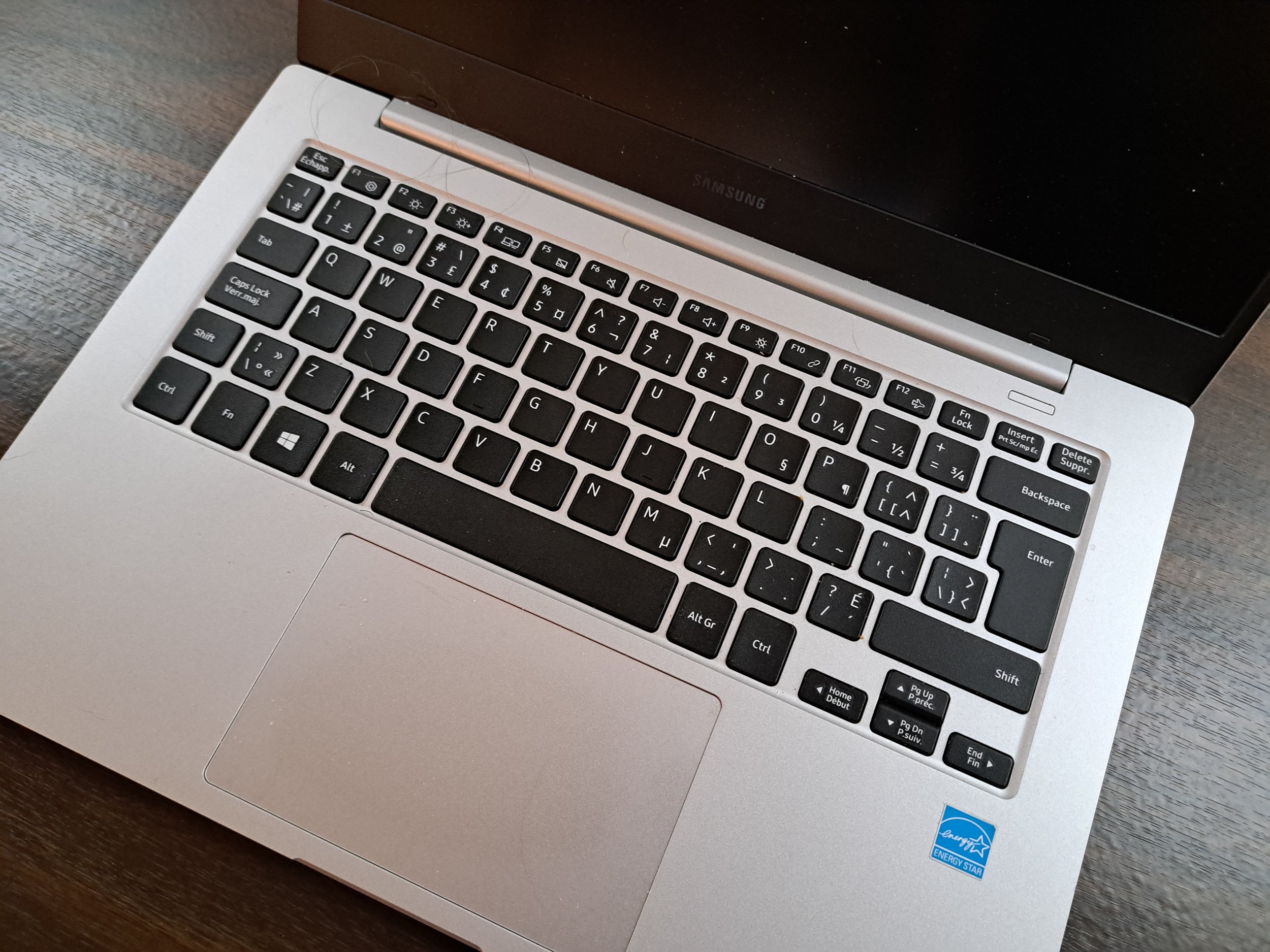
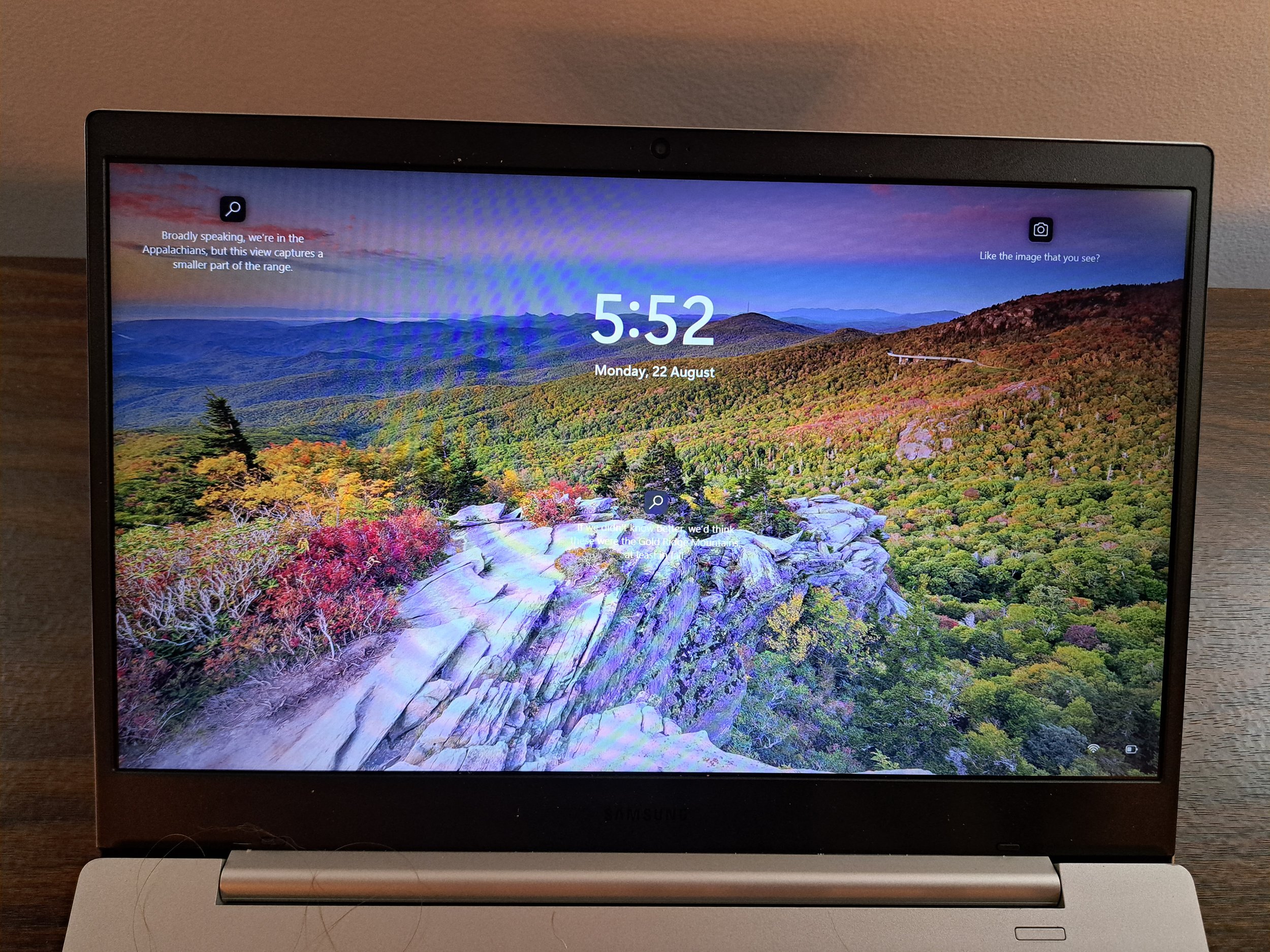
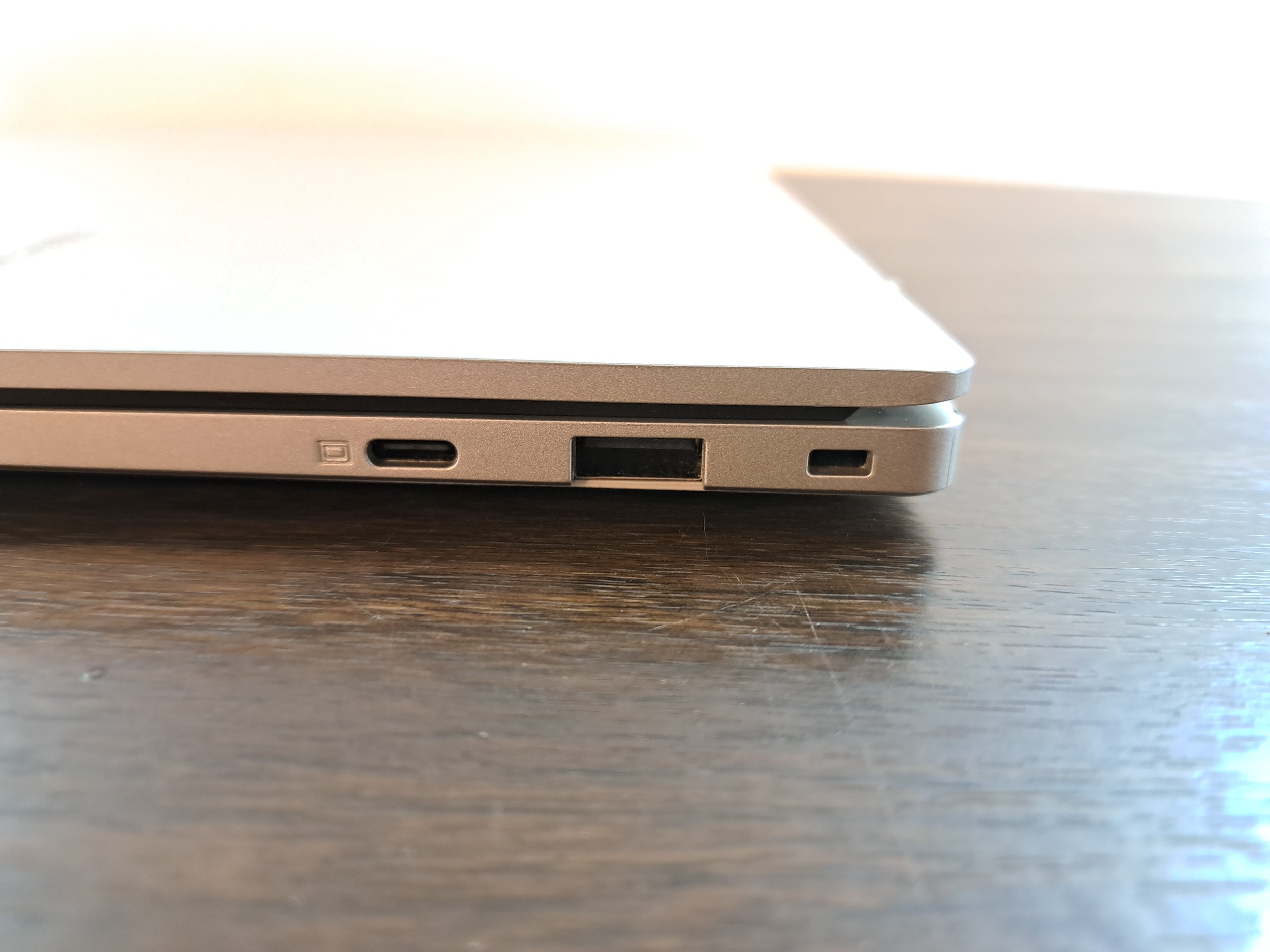
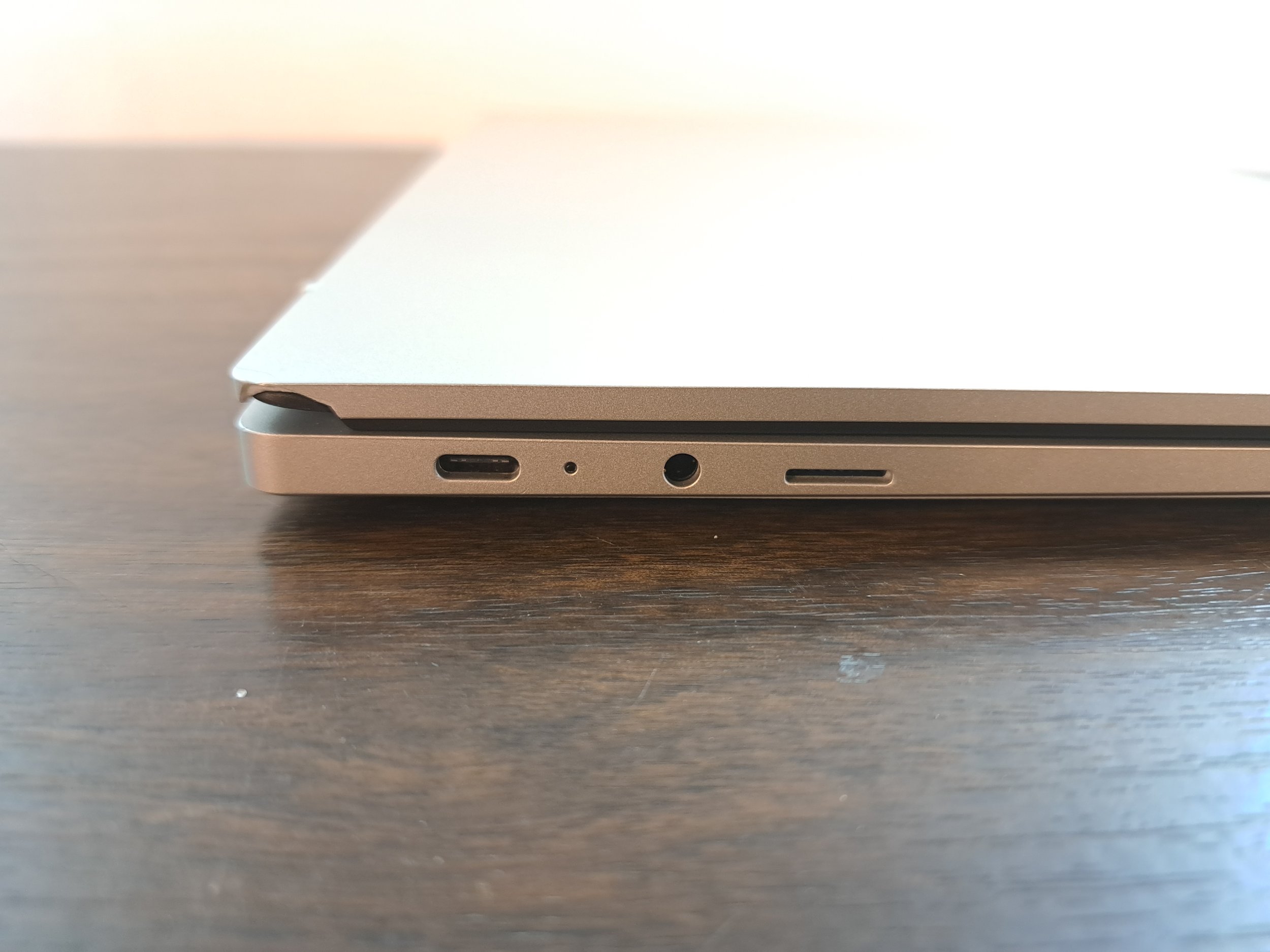
Battery life was one of the original selling points of Windows on ARM laptops, and battery life is good here. Under light use I have been getting between 14 and 16 hours of battery life, something an Intel or AMD laptop could only dream of. When pushing the computer to its limit, which I did often because the computer was so underpowered, battery life was closer to 8 hours. In reality the average battery life number is probably closer to 12 hours. That is more than you see from the average Intel or AMD laptop, but not so good that it is worth the performance penalty.
Otherwise, it has Wifi 5, Bluetooth 5.1, a terrible 720p webcam, and an all-plastic build that is creaky, flexible in ways it shouldn’t be, and definitely feels like a laptop that I paid less than $200 for. My favorite part is that if I pick it up from the lower right corner when the laptop is on, the plastic flexes so much that it actually clicks the trackpad.
Samsung clearly cut a lot of corners on this laptop to hit a price point. I definitely would not recommend this laptop to anyone, even if it ran on an intel processor. You can do better even this this price range. This display alone is enough of a deterrent. This is not a good computer.
However, I did not pick up the Galaxy Book Go for the hardware. This laptop serves as one of the only affordable platforms running Windows on ARM and that’s what I’m really here to talk about.
Windows on ARM – Not quite an ARM and a Leg
Windows 11 on ARM is the 3rd ARM based operating system Microsoft has released. The original release was the disastrous Windows RT, the version of Windows 8 that looked like Windows but didn’t run Windows apps, and Windows 10 on ARM, which saw its first version in 2017. Microsoft doesn’t actually even call the products Windows on ARM, or Windows 11 ARM version, or anything like that. Inside the operating system it is only referred to as Windows 11, with the only indication that it is Windows on ARM by looking at the processor in system info. That, and all the apps that don’t run, but we’ll get to that.
Microsoft’s clear goal with Windows on ARM is to build a version of Windows that users and just use and not have to worry about. It is something that Apple has mostly accomplished with the M series processors in their Mac lineup. Where Windows RT couldn’t run x86 Windows apps at all, and Windows 10 on ARM could only emulate (most) 32-bit x86 Windows applications, Windows 11 on ARM can emulate (some) 64 bit applications, allowing most, if not all Windows applications to run on Windows on ARM.
This app compatibility is a big deal, because there is not a big ecosystem of apps written for the ARM version of Windows. Windows RT proved that a version of Windows that can’t run Windows apps would fail, and Windows 10 was only a half step. The promise of Windows 11’s ARM version was to take that last half step and allow users to run nearly any app they want.
So how does Windows on ARM run today? My semi-professional opinion is….. I’m not sure. Testing Windows on ARM on lower power, limited hardware seen in the Galaxy Book Go makes it hard to determine whether any issues are related to Windows on ARM, or the low powered hardware. Running emulated apps carries a performance penalty, with apps taking a long time to launch. Affinity Photo, a 64 bit only x86 app takes almost 90 seconds to launch on the Galaxy Book Go. Once it gets running, it works well enough, if a bit slow. But that slowness can also be attributed to the limited 4GB of RAM on the Galaxy Book Go, something not generally good enough for a big photo editor. Google Chrome is also much slower to start than it would be on a laptop with an Intel or AMD processor, but runs fine once it gets going, until running into that 4GB RAM issue.
Using apps with ARM versions, like the Edge web Browser and most of the built-in apps, the laptop performs much like I would expect from a $300-$500 Windows laptop. Edge launches fast enough, runs well enough… until that 4GB RAM limit.
So, while running ARM optimized apps remains a solid enough experience, the fact remains that there just aren’t enough of them. Microsoft itself is strangely complicit in this. Not all of the built in Windows applications run with native ARM versions. Until recently the App Store app was an emulated app, certain built-in apps like Notepad, Paint, and more remain x86 apps that run in emulation. How can developers be expected to take Windows on ARM seriously when 5 years after its introduction not even all of Microsoft’s apps built into Windows have ARM versions.
The conundrum here is the hardware I’m running Windows 11 on ARM on. 4GB of RAM is not enough on a modern PC in 2022, and it shows. Even when running Microsoft Edge, opening more than 2 or 3 tabs slows the computer to a near crawl because the system runs out of RAM. Because of those limits it’s nearly impossible to judge the true performance of ARM optimized apps. I believe the experience would be fine on a system with 8GB or more of RAM, but I’m not willing to spend $1200 on a higher end Windows on ARM laptop to find out.
That price structure remains the problem. Windows on ARM still can’t run every Windows app, and a version of Windows that can’t run every Windows app isn’t a version of Windows worth getting. And some of the advantages that Windows on ARM had have nearly been eliminated. Battery life was a huge selling point of the original version of Windows 10 on ARM, with laptops getting up to 18 hours of battery life. But after getting the laptops to users, it became clear that while those claims were mostly true, if everything takes twice as long to run on an ARM laptop, does the battery life even matter? And Intel and AMD laptops have closed the gap. The average laptop got between 6-8 hours of battery life when Windows on ARM debuted. Now 10-12 hours is not uncommon among the best Windows laptops. And if given the choice between 11 hours on an Intel laptop or 14 hours on an ARM laptop, I would take the Intel laptop every time.
The frustrating part of this is that it is easy to look across the virtual street and see what Apple has done with the M series Mac line. The M1 Macbook Air and MacBook Pros launched in 2020, 3 years after the first Windows on ARM computers. The M1 MacBooks run nearly every Mac App and run them just as fast or faster than the previous Intel Macs. And they have the battery life to go with it. I used a 13” M1 MacBook Pro as a work computer for nearly a year and I could get almost two full workdays out of the battery on that computer, all while being the fastest laptop I had ever used.
Windows on ARM, by comparison, feels slow, can’t run all the apps, and doesn’t reach those battery life levels. Not all of this is Microsoft’s fault, of course. The Snapdragon processors in ARM laptops, especially the midrange 7c in the Galaxy Book Go, is not up to the task of heavier Windows apps. I would really like to see what Windows 11’s ARM version could do running on a system as powerful as the M1 MacBook Pro. Then it would be a better test. Alas, Microsoft can only put Windows on the available hardware, and until that hardware catches up, we won’t know the true potential. Even then, if it can’t run all the apps, what’s the point?
Windows on ARM laptops might have their moment in the sun. But that moment is not today. Do yourself a favor and avoid them at all costs until the situation improves, if it ever does.


